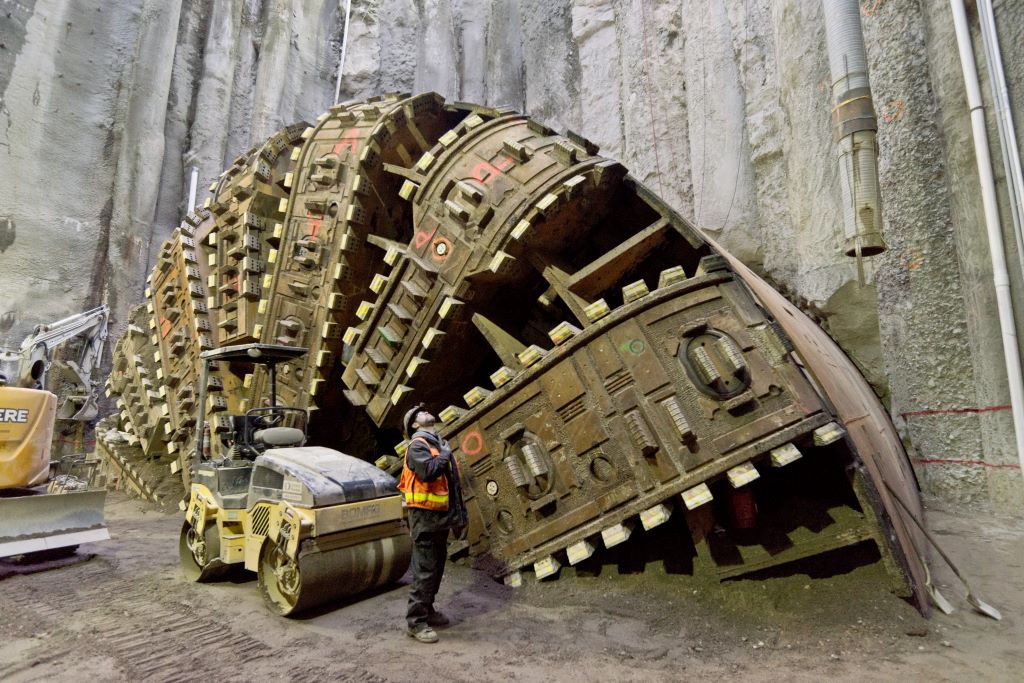Bertha was a tunnel boring machine (TBM) used in the construction of the Alaskan Way Viaduct replacement tunnel in Seattle, Washington. Named after Seattle's first female mayor, Bertha Knight Landes, it was the largest TBM in the world at the time of its construction, with a diameter of 57.5 feet (17.5 meters).

Key Events in Bertha's History:
1. Launch and Early Progress (2013):
Bertha began tunneling in July 2013, but progress was slow due to various challenges, including soil conditions and technical difficulties.
2. Breakdown and Repairs (2013-2015):
In December 2013, Bertha hit a steel pipe that was part of a well casing, causing significant damage to the machine's seals and other components. This led to a major breakdown, and tunneling was halted for about two years. The machine had to be repaired in a specially constructed pit. Crews replaced the damaged parts and made other necessary upgrades.
3. Resumption and Completion of Tunneling (2015-2017):
After repairs, Bertha resumed tunneling in December 2015. Despite further challenges, including a sinkhole that formed above the tunnel route, Bertha successfully completed the tunnel excavation in April 2017.
4. Disassembly and Decommissioning (2017):
After completing its task, Bertha was disassembled and removed from the site. The components were either recycled or repurposed, marking the end of the machine's operational life.
The tunnel Bertha created now serves as a key transportation route in Seattle, replacing the seismically vulnerable Alaskan Way Viaduct.




